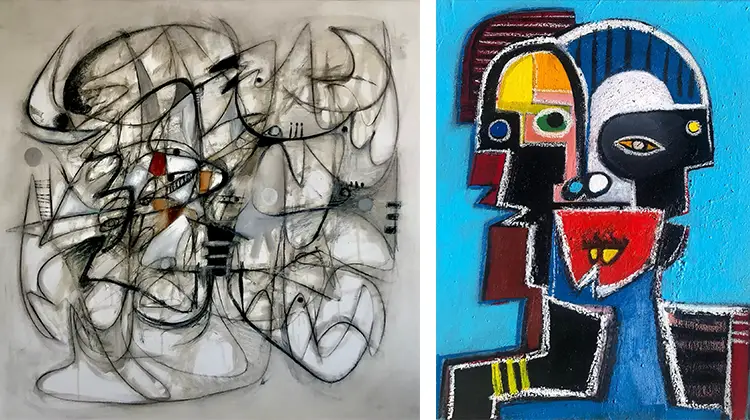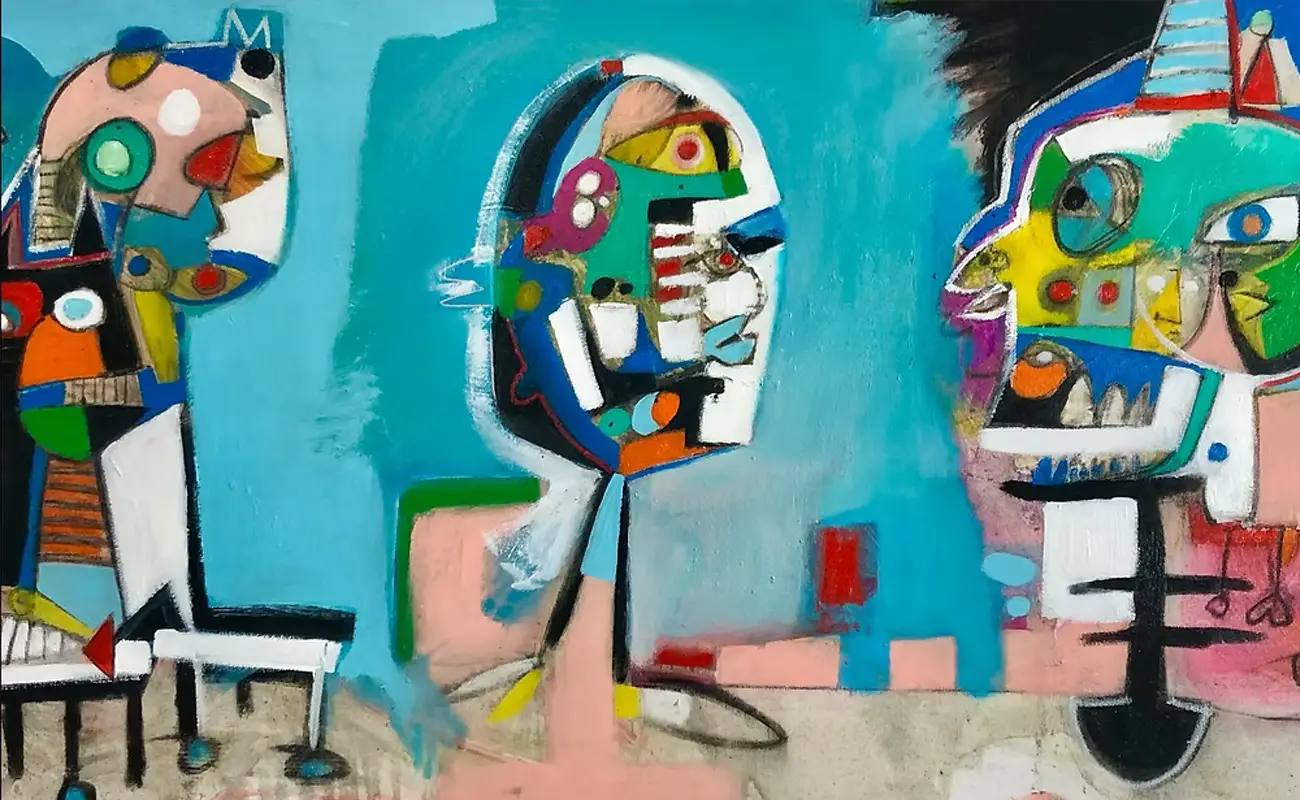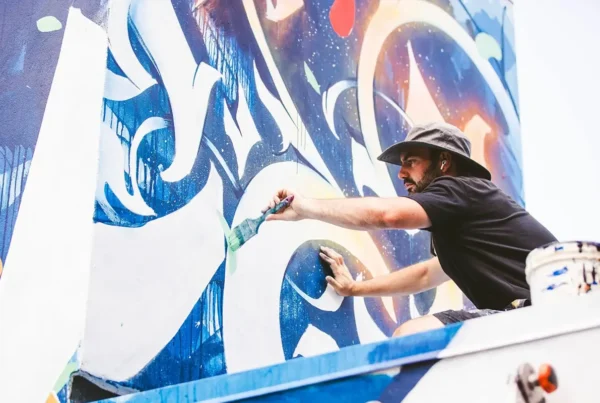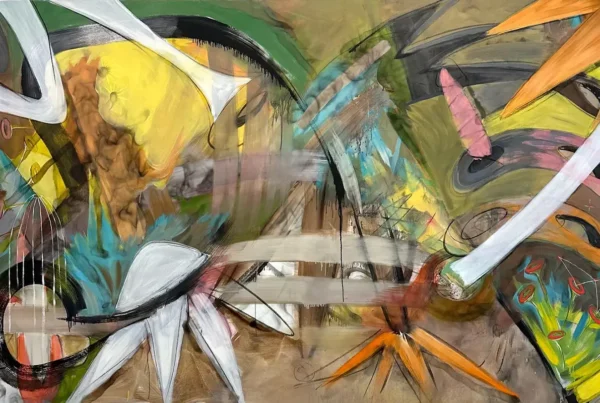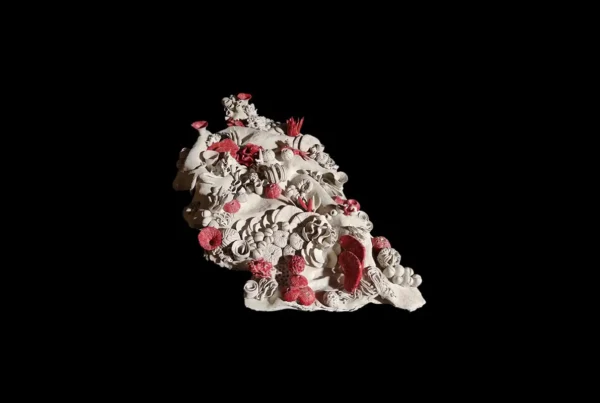A Conversation in Form: The Unscripted Evolution of an Artist
Adam Henderson’s artistic journey defies the conventional pathways many visual creators follow. Born in 1964 in Niagara Falls, New York, he bypassed the structured corridors of academic art education, forging his own way into creativity. This self-guided approach, rather than hindering him, has shaped a distinctive vision—unfettered by external expectations. Henderson began painting in 1988, albeit sporadically, before gradually cultivating a deeper, more immersive relationship with his craft. Encounters with seminal institutions and iconic artworks, especially during visits to the Museum of Modern Art, became turning points. There, artists like de Kooning and Pollock left a lasting impression, igniting a sense of purpose and wonder that pushed him toward greater artistic commitment. Influential relationships—like that with artist Rebecca Rawbacker—also played a vital role in reinforcing the idea that a creative life wasn’t only viable but essential.
Though he stands firmly in the present, Henderson’s soul echoes with the aesthetics of the past, particularly those of modernist design. His artistic identity is deeply intertwined with mid-century modernism, a connection born not in theory but in practice. Over the past 20 years, Henderson immersed himself in the curation and commerce of vintage design—collecting and trading pieces that champion clean geometry and expressive functionality. This long engagement with form and structure helped him realize that his affinity with modernism wasn’t just admiration; it was a lens through which he saw the world. Whether drawn to the elegance of a stark architectural line or the intricate anatomy of an insect, his appreciation for design is both wide-reaching and deeply personal. This grounding in tangible objects and natural intricacies has profoundly shaped his own visual vocabulary.
Rather than beginning with blueprints or sketches, Henderson’s sculptural process is anchored in responsiveness. He approaches each new piece as a silent collaboration between his instincts and the materials at hand—most often wood or metal. The act of creation begins not with imposition but with observation. By “listening” to the shape and energy of an object, Henderson allows his hands to be guided more by intuition than intention. This surrender to process requires trust and a willingness to step aside, letting the emerging form take precedence. For him, the most challenging aspect of creation isn’t the physical execution—it’s the quiet mental negotiation that leads him to let go of preconceived outcomes. What results is work that feels both spontaneous and deliberate, echoing the inner rhythm of an artist attuned to nuance.
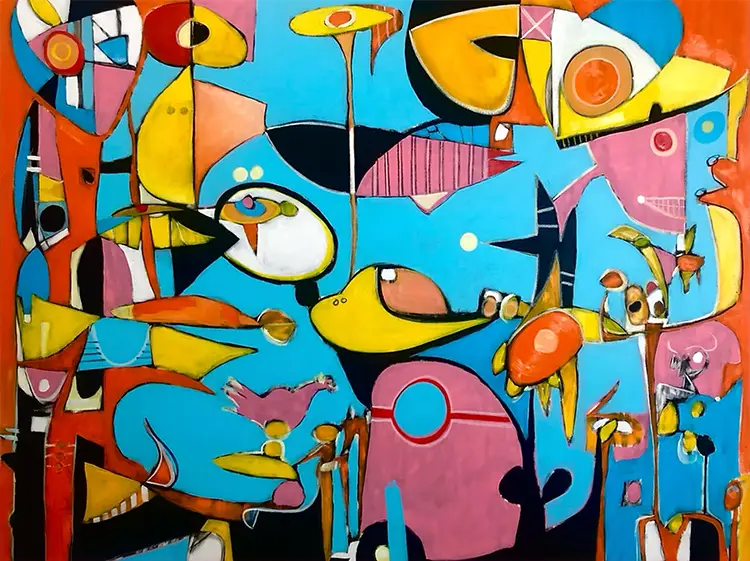
Adam Henderson: Scale, Intimacy, and the Hidden Power of Small Things
Henderson’s sculptures possess a distinctive quality that sets them apart—not just in form, but in size. By working on a smaller scale, he seeks to blur the boundary between art and life, removing the barriers that often keep art confined to grand institutions or imposing walls. His works are designed to live alongside people, to be part of their daily environments rather than museum spectacles. The modest dimensions invite intimacy, allowing each piece to be integrated into private spaces and discovered slowly. Henderson wants his sculptures to function almost like secrets—unobtrusive yet potent, ready to surprise and engage on a quiet, personal level.
This sense of intimacy extends into his painting practice, where bold colors and complex abstraction invite viewers into a world that resists singular interpretation. His paintings do not offer definitive narratives or overt symbolism. Instead, they evoke a flexible, emotional space where viewers can project their own meanings. Henderson combines the compositional rigor of mid-century abstraction with the lyrical fragmentation of neo-cubist figuration. Faces, animals, and amorphous forms populate his canvases, often entangled in rhythmic patterns that echo both chaos and symmetry. His palette favors high-impact hues—vivid reds, electric oranges, deep blues—that carry their own emotional resonance. While the initial impression may be one of spontaneity, a closer examination reveals an underlying structure, a thoughtful choreography of forms designed to draw the eye and provoke reflection.
Improvisation is central to Henderson’s methodology, but it is never careless. The energy in his work stems from a fast-moving intuition, a kind of visual jazz where each element responds to the next. Shapes and symbols emerge fluidly, hinting at a mythic or folkloric origin that never fully reveals itself. Rather than telling stories, Henderson’s forms suggest fragments of a visual language—a syntax of curves, edges, and colors that speaks to the subconscious. He consciously avoids linear narratives, preferring compositions that allow space for the viewer’s imagination to roam. This approach gives his work a surreal, dreamlike quality where perspective shifts and familiar shapes take on new, enigmatic roles.
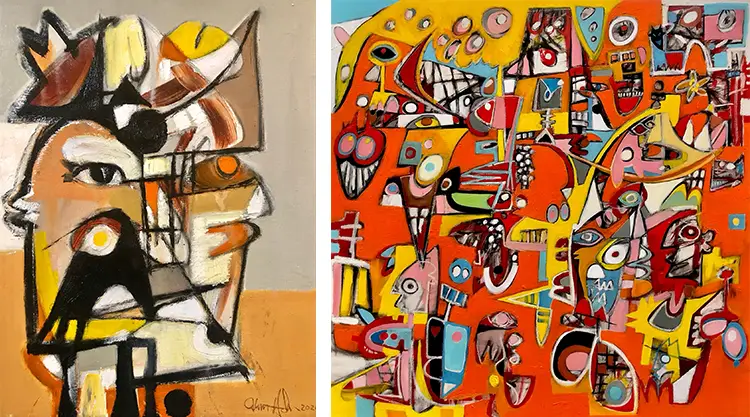
The Artist as Collector: Influence Through Accumulation
Henderson’s aesthetic isn’t born in isolation; it evolves through his deep engagement with the visual world around him. He draws inspiration from both high and low sources, integrating references from art history, street culture, and nature into a cohesive but ever-evolving visual style. Among the artists who have most impacted him, Paul Klee, Joan Miró, and Jean Dubuffet stand out. Their influence is evident in Henderson’s biomorphic contours, his playfully fractured compositions, and his fearless embrace of abstraction. But he also brings in elements reminiscent of graffiti, indigenous motifs, and organic structures—creating a layered visual conversation that spans continents and centuries.
This eclectic blend of sources is not accidental. Henderson is, in many ways, a visual archivist—constantly absorbing and reinterpreting the imagery that surrounds him. He notices details that others overlook: the curve of an industrial pipe, the lines on a beetle’s shell, the pattern of graffiti fading on a city wall. These visual cues become part of his internal library, resurfacing in abstracted forms across his sculptures and paintings. His mind functions like a visual sponge, filtering and remixing information until it re-emerges, transformed by his unique sense of rhythm and proportion. This accumulation of influences, rather than diluting his voice, gives it complexity and depth.
Physical spaces also play a key role in Henderson’s artistic footprint. He currently exhibits his work at two distinct galleries—Christopher Anthony Ltd. in Palm Springs and The Zebra Gallery in Easton, Maryland. These venues, known for championing modernist and abstract design, provide a fitting context for his work to resonate with audiences who share his appreciation for aesthetic nuance. In addition to gallery representation, some of Henderson’s pieces have entered the auction market, reaching new collectors and expanding the circles of engagement. Each venue offers a new opportunity for discovery, reinforcing Henderson’s commitment to creating art that is both personal and widely accessible.
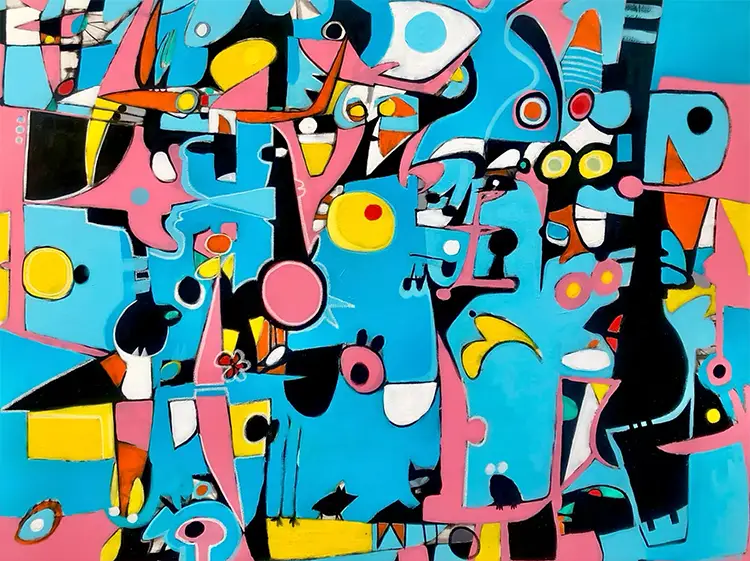
Adam Henderson: Discovery as Discipline, Mystery as Muse
At the heart of Adam Henderson’s practice lies a profound dedication to exploration. Each new piece is approached not as a repetition of past successes, but as an open-ended inquiry—a visual question waiting to be answered through engagement with material and instinct. This mindset fuels his sustained output, keeping his work dynamic and his voice fresh. He describes each act of creation as a conversation, where the artist listens as much as he speaks. It is this give-and-take, this willingness to embrace the unknown, that grants his work its subtle emotional power. The sense of unpredictability isn’t chaos; it’s freedom within form, a space where intuition takes precedence over prescription.
The materials he chooses—often modest and unassuming—become vehicles for something far greater. Whether it’s a block of wood or a stroke of paint, each gesture contains potential, waiting to be activated through attention and responsiveness. Henderson does not force his materials into submission; he collaborates with them, teasing out forms that seem to suggest themselves rather than being imposed. This sense of co-creation is what gives his sculptures and paintings their organic feel. They don’t announce themselves loudly; they invite viewers to approach, to engage, and to discover. The quiet complexity of his work rewards patience and observation, traits increasingly rare in a fast-moving art world.
Henderson finds ultimate satisfaction not in recognition or accolades, but in connection. While the creative process is intensely personal, it is the moment of resonance—when a viewer sees something of themselves in his work—that completes the circle. Art, for him, is not an act of self-expression alone; it is a form of communication that transcends language. His pieces offer not answers, but invitations—to look closer, to feel more deeply, and to imagine more freely. This openness, paired with his disciplined commitment to process, positions Adam Henderson not merely as an artist of objects, but as a builder of spaces—spaces where form, color, and mystery coexist in delicate balance.
